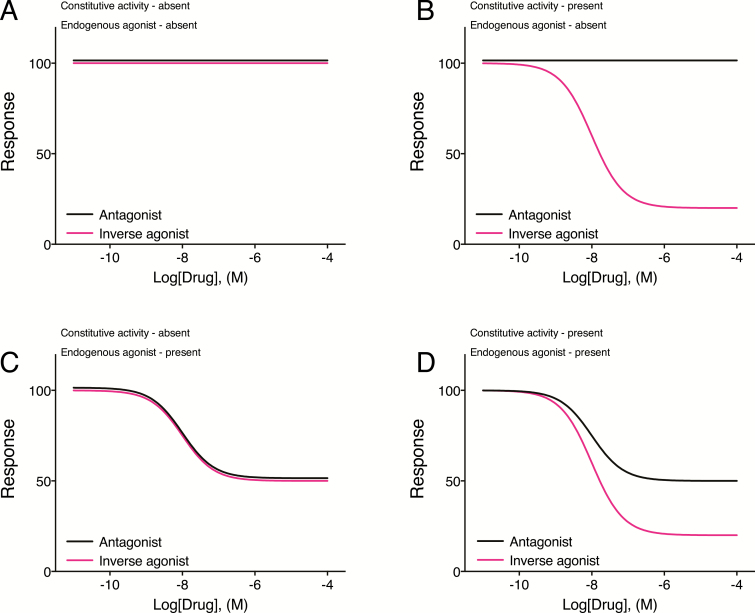Figure 3.
Effects of antagonists and inverse agonists in systems with or without constitutive receptor activity and endogenous agonist tone. (A) In a system where there is no endogenous agonist action and no constitutive receptor activity, application of inverse agonists or antagonists will not alter the basal level of response. (B) When there is constitutive receptor activity but no endogenous agonist action, an antagonist will not alter the basal level of response. By reducing constitutive receptor activity, an inverse agonist will reduce the basal response. (C) In a system with only endogenous agonist tone (no constitutive receptor activity), both antagonists and inverse agonists will reduce the ongoing agonist-dependent response equally as both will reduce receptor occupancy by the agonist. (D) When there is both constitutive receptor activity and action of an endogenous agonist, an antagonist will reduce the component of the response that is due to the endogenous agonist. An inverse agonist will reduce both the endogenous agonist component, but also will reduce constitutive receptor activity; therefore, the effect of the inverse agonist will be greater than that of the antagonist.

